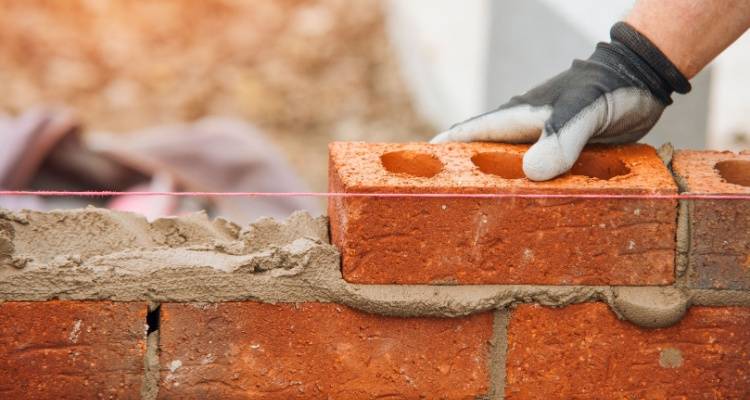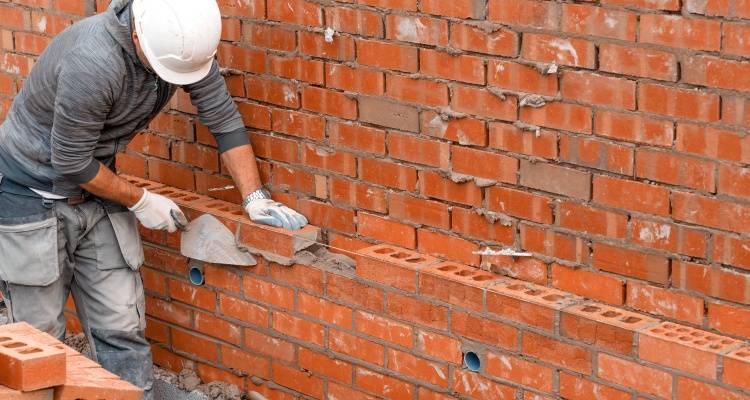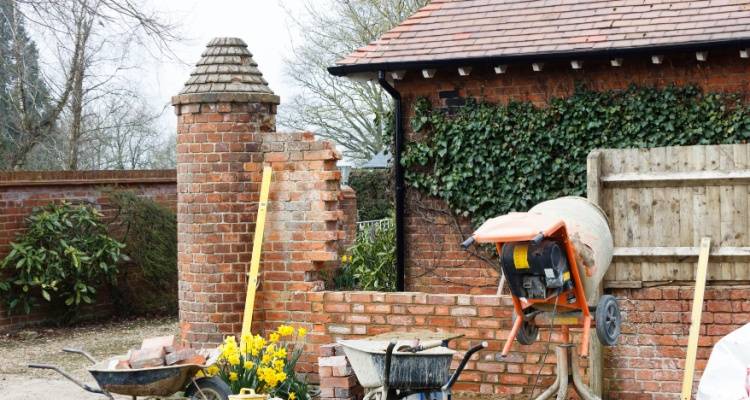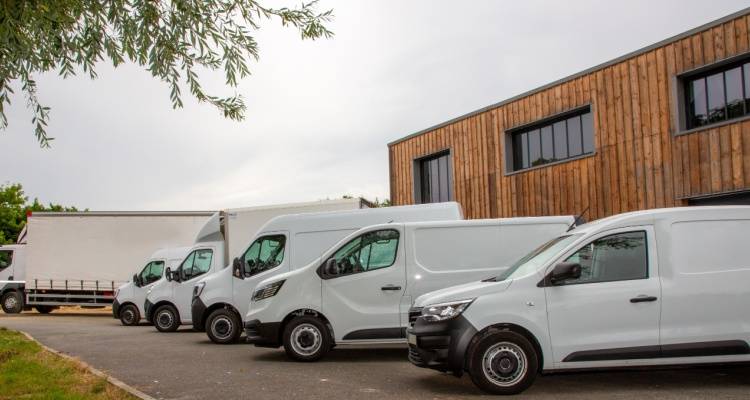How Much Do Bricklayers Make?
With an 81% year-on-year increase from 2023 to 2024 in searches for “bricklayers near me”, it’s no surprise that bricklaying continues to be a lucrative career. Being an evergreen trade, newly qualified bricklayers can earn up to £32,000 per year (pre-tax), with business owners having the potential to bring in over £60,000 per year (pre-tax).

Whether you’re researching vocational career options and want to compare the earning prospects of bricklaying with other manual trades or are an already-experienced bricklayer wanting to benchmark your earnings against industry averages, understanding how much bricklayers make can earn in the UK is just as important for experienced traders as it is for budding apprentices.
Let’s get into it.
Table of Contents
Average Bricklayer Salary
How much do bricklayers make? Here’s a quick overview of the average bricklayer salaries in the UK:
| Bricklayer Seniority/Position | Income Per Hour | Income Per Day | Income Per Year |
|---|---|---|---|
| Apprentice bricklayer | £6 | £50 | £11,000 |
| Newly-qualified bricklayer | £18 | £145 | £32,000 |
| Experienced bricklayer | £19 | £155 | £40,000 |
| Self-employed sole trader | £38 | £300 | £56,000 |
| Limited company business owner | £40 | £320 | £60,000 |
All figures are estimates, pre-tax.
Bricklaying is a lucrative career, with newly qualified bricklayers earning around £32,000 per year (pre-tax). Once you have more experience in the industry, this salary can rise to £40,000 (pre-tax).
As expected, incomes rise further once you’ve entered the self-employed or business owner territories, with incomes in the region of £56,000 and £60,000 (pre-tax), respectively. Bear in mind that these salaries will be impacted by business and other operational running costs, such as vehicle costs, fuel, and material charges, bringing down total take-home amounts.
There will always be a need for bricklayers in the UK and beyond. However, some factors still impact the total annual income, such as weather conditions, geographical locations, and increase/decrease in demand.
Things That Impact Bricklayer Earnings
Understanding how much a bricklayer can make in a given year is one thing–but understanding the factors that impact bricklayer earnings is just as important.
From location to experience, qualifications, and employment type, here’s everything you need to know.
Location
What areas of the UK have the highest earnings for bricklayers? Let’s take a look at the difference between Manchester, Birmingham, and Central London salaries:
| Bricklayer Seniority/Position | Location | Income Per Year |
|---|---|---|
| Trainee bricklayer | Manchester | £24,000+ |
| Newly-qualified bricklayer | Manchester | £30,000+ |
| Newly-qualified bricklayer | Birmingham | £33,000+ |
| Newly-qualified bricklayer | Central London | £37,000+ |
| Self-employed sole trader | Central London | £50,000+ |
All figures are estimates, pre-tax.
Bricklayers are capable of earning more in London and the South East of the UK when compared to the north of the country due to increased demand. With this in mind, the cost of living will also be higher in these locations, so supplies, materials and running costs (such as vehicle maintenance and fuel) will also be higher, offsetting the initial higher gross income.
Let’s see how that compares to some other manual trades in the UK:
| Trade Seniority/Position | Location | Income Per Year |
|---|---|---|
| Newly-qualified bricklayer | Central London | £37,000+ |
| Newly-qualified electrician | Central London | £40,000+ |
| Newly-qualified gardener | Central London | £30,000+ |
| Newly-qualified plumber | Central London | £40,000+ |
All figures are estimates, pre-tax.
Newly qualified electricians and plumbers are set to earn the most in London at £40,000+, with bricklayers earning around £37,000+ and gardeners £30,000.
Experience and Qualifications
It’s common knowledge that the more skilled you are in bricklaying, the higher your income will be, and vice versa–but how does bricklaying compare to other manual trades?
Let’s take a look:
| Trade | Seniority | Income Per Year |
|---|---|---|
| Bricklaying | Apprentice | £11,000 |
| Electrician | Apprentice | £11,000 |
| Plumbing | Apprentice | £18,500 |
| Gardening | Apprentice | £9,000 |
| Bricklaying | Experienced (1 to 5 years) | £40,000 |
| Electrician | Experienced (1 to 5 years) | £52,000 |
| Plumbing | Experienced (1 to 5 years) | £45,500 |
| Gardening | Experienced (1 to 5 years) | £29,500 |
| Bricklaying | Limited company business owner | £60,000 |
| Electrician | Limited company business owner | £65,000 |
| Plumbing | Limited company business owner | £73,000 |
| Gardening | Limited company business owner | £67,000 |
All figures are estimates, pre-tax.
Here are the key stats:
- Bricklaying as an apprentice is the second-highest earning trade when compared with electricians, plumbers, and gardeners at £11,000.
- As an experienced bricklayer of 1 to 5 years, bricklayers are the third highest-earning trade when compared with electricians, plumbers, and gardeners at £40,000.
- When it comes to limited company business ownership, bricklaying will earn you around £60,000, £13,000 lower than the highest-paid trade in our selection (plumbing, £67,000).
Bricklayer salaries can vary greatly from region to region, with those in London and the South East of the UK being higher than those found in the north of the country. Level of experience and overall demand for the trade will also impact your take-home earning potential.

Lastly, if you have any specialisms–such as restorative brickwork/masonry or a focus on eco-friendly bricklaying–you can expect your income to be higher as a result of this focus.
Self-Employed vs. Employed Earnings for Bricklayers
If you have been working as a bricklayer for a few years and have a solid base of customers and clients and want to transition into self-employment or being the business owner of a limited company, here’s what you need to know when it comes to projected income:
| Bricklayer Seniority/Position | Income Per Hour | Income Per Day | Income Per Year |
|---|---|---|---|
| Self-employed sole trader | £38 | £300 | £56,000 |
| Limited company business owner | £40 | £320 | £60,000 |
All figures are estimates, pre-tax.
How much do self-employed bricklayers get paid? In the region of £300 per day and £56,000+ per year (pre-tax). The self-employed bricklayer hourly rate is around £38 but can fluctuate depending on location, experience level, and whether or not the call-out is planned or an emergency (the latter being higher than the former).
When it comes to limited company business owners, the hourly rate is around £40, with a daily rate of £320 and an annual take-home of £60,000 (pre-tax).
In the UK, it’s common to see self-employed bricklayers. This employment status gives them better control over their work projects, and a better work-life balance as they have the flexibility to manage their own working diary against their personal commitments instead of being told what to do by someone else.
Self-employed bricklayers also have the chance to set their own rates, helping to boost their earning potential while pocketing more of the gross income as no one else will need a cut. With this being said, there will be business costs and running fees to bear in mind for both self-employed and business owners of limited companies.
These include:
- Vehicle costs
- Fuel costs
- Materials and supply costs
- Tools and maintenance/upkeep of tools
- Insurance
For a self-employed bricklayer, you can expect added fees of around £7,000 per year to deduct from your gross income, and business owners of limited companies can expect around £10,000.
Specialisations
In 2024, bricklayers were reported as being in “high demand”, with six in ten recruitment agencies reporting a higher-than-usual demand for construction workers. There is said to be a shortage of bricklayers–seven in ten recruitment agencies attest to this–which is understandably contributing to this issue.
While this is the case for general bricklayers in the UK, this extends to those with specialisms such as restorative masons, eco-friendly bricklayers and those working on custom masonry. The more bespoke your service–and the fewer individuals/companies offering the service–the higher your potential earnings are likely to be.
How Can You Make More Money as a Bricklayer?
While bricklaying is a well-paid career in its own right, there are some ways to increase your salary further if you want to fully maximise your earning potential.
Qualifications and Training
Apprentice bricklayers can bring in £11,000 per year (pre-tax). This jumps to around £32,000 per year (pre-tax) for newly qualified bricklayers–and once you have more experience in the industry, this salary can rise to £40,000 (pre-tax).
In terms of training, the National Careers Service suggests the following routes to enter into bricklaying:
College courses
- Level 1 Certificate in Construction Skills — suitable for 14-19 year-olds or individuals of any age wanting to enter the profession, and no previous experience is required.
- Level 2 Diploma in Bricklaying — practical and theory-based assessments, ideal for individuals with a basic understanding of construction in general, and bricklaying specifically.
- Level 2 and 3 Diploma in Trowel Occupations — Level 2 is suitable for those aged 16 and over with basic knowledge and skills in trowel use, and Level 3 is suitable for those with experience in the construction industry who want to expand their knowledge to move into a supervisory role.
- T-Levels On-Site Construction — a two-year course with on-site placements to teach general construction health and safety, building design and planning, construction methods and regulations/standards.
Apprenticeships
- Bricklaying Level 2 Intermediate Apprenticeship — over two years, individuals can learn about health and safety, PPE, environmental and sustainability considerations, and practical hands-on bricklaying.
- Craft Bricklaying Level 3 Advanced Apprenticeship — over 18 months, individuals can set out and lay bricks to train and become a craft bricklayer, foreman bricklayer, or a senior bricklayer.
In addition to the suggested courses, trainees can also learn on the job. The trainee will need a Construction Skills Certification Scheme (CSCS) card to legally work on a construction site.
Specialisms
Moving into specialised sectors of bricklaying can be a lucrative move. These fields typically involve more training than standard bricklaying, which can yield higher incomes.
These can include:
- Heritage restoration/heritage masonry - focusing on historical properties that have either fallen into disrepair or need routine maintenance. This will involve working with different types of bricks and different laying methods, requiring a deeper understanding of the construction and restoration process to be completed successfully.
- Eco-friendly bricklaying/construction - while bricks are considered eco-friendly by nature, you can amplify your earnings by carving a niche in the eco-friendly industry to appeal to businesses and homeowners keen to keep their carbon footprint in check.
- Custom brickwork/masonry - moving away from traditional bricklaying in residential and commercial buildings, custom brickwork can have an artistic characteristic that appeals to businesses wanting bespoke creations such as murals or other artistic flourishes created with bricks.
While some of these specialisms might not have the same demand as traditional bricklaying might, the income can be substantially larger–even for one-off projects, especially in the custom brickwork sector–and you can get a great sense of fulfilment from restoring old buildings to their previous glory through restorative masonry.
Becoming Self-Employed or Starting a Limited Company
How much do self-employed bricklayers get paid? The short answer is that it’s more than bricklayers employed by someone else.

Self-employed bricklayers earn in the region of £56,000 per year (pre-tax), while limited company business owners can command up to and beyond £60,000 (pre-tax). Making the move from being employed to employing yourself and others can be overwhelming, so here are the things to consider:
- Operational and running costs, such as vehicles, fuel, materials, and any maintenance, will impact your take-home income.
- If you’re employing other bricklayers, their income will also come out of your business’s gross income.
- You will be solely responsible for your clients/work sourcing, so it’s important that you have a well-defined customer base before making the move.
- More paperwork will be involved than when you were employed by someone else.
With this being said, it is a lucrative move if you’re willing to take the risk, and it can propel your business income to new heights–especially if you’re specialising in a certain industry, such as restorative masonry or eco-friendly bricklaying and there’s a high demand for those services in your area.
Responding to Emergency Call-outs
It might not be the most glamorous suggestion, but having your bricklaying services available 24/7 will help to boost your earning potential as customers can contact you “out of hours” in emergency call-out situations. Due to the nature of “emergency” call-outs, they will always yield higher fees than a job booked in advance.
These emergencies can include:
- Wall collapses
- Chimney collapses
- Structural damage from natural disasters (weather, fire, flood, etc.)
Having this service available might be a good approach in the fledgling stages of your company, as it can help build your reputation as a respected and reliable bricklaying service.
Ensuring a Good Reputation and Sustained Demand
Possibly the number one characteristic of a well-paid bricklayer is how good their reputation is. You can be extremely talented and experienced, but if your clients and past customers aren’t recommending you to their friends or other businesses, there might be something wrong with your approach.
Ensuring a good reputation is key to ensuring consistent demand in your trade. Further to your sound bricklaying skills, you should be openly communicative with your clients, helpful in responding to queries and questions, clean and tidy while on site, and complete work to deadlines and within budget.
Industry Trends and Demand
Bricklaying is the kind of industry that will never go out of style–whether it’s commercial buildings, residential properties, new builds or restoring years-old homes, bricklayers will always be needed. Between 2023 and 2024, an 81% year-on-year increase was reported in online searches for “bricklayers near me”, so if you’re looking for a secure trade, bricklaying might be the choice for you.

Bricks are considered one of the most eco-friendly construction materials in the UK. The push for more environmentally friendly approaches to building and construction is a great sign of the longevity of the trade.
Let’s look at the environmental positives of bricks:
- Bricks keep you cool in the summer and warm in the winter. This helps to impact heating bills positively.
- Bricks are incredibly durable, meaning their lifecycle is long and enduring. This means no expensive and environmentally costly demolitions need to happen.
- When repairing, individual bricks can be replaced instead of tearing down an entire wall, again positively impacting the environment.
- Some bricklayers can carry out “brick sourcing”, where local bricks are sourced 5km to 10km from the project’s site. This local service reduces carbon footprints from extended journeys up and down the country to bring bricks to the site.
In addition to these factors, the brick creation process has recently been changed to be more environmentally conscious, helping the UK to meet the 2050 Net Zero goal. Keith Aldis, CEO of the Brick Development Association (BDA), details how they are committed to “reduce waste and increase sustainability” within the industry, encouraging local domestic supply chains and factory upgrades to reduce carbon footprints during manufacturing processes.
Is Becoming a Bricklayer Hard in the UK?
As bricklaying is a highly sought-after trade in the UK and overseas, becoming a bricklayer is a straightforward journey.
College courses
- Level 1 Certificate in Construction Skills
- Level 2 Diploma in Bricklaying
- Level 2 Diploma in Trowel Occupations
- T-Levels On-Site Construction
Apprenticeships
- Bricklaying Level 2 Intermediate Apprenticeship
- Craft Bricklaying Level 3 Advanced Apprenticeship
In addition to the suggested courses, trainees can train on the job. The trainee will need a Construction Skills Certification Scheme (CSCS) card to legally work on a construction site.
Summary
Bricklaying is an incredibly enduring, lucrative career with long-lasting prospects. There will always be a need for bricklayers in the UK and beyond in commercial, residential and private projects, making it a safe industry to enter if you’re looking for a career change.

- Newly qualified bricklayers can earn up to £32,000 per year.
- Location, experience level, specialisms, and employment status (employee vs. self-employed) will impact earnings.
- Online searches for bricklayers have risen 82% (2023 to 2024).
- Bricklaying associations are pushing for environmentally friendly approaches to bricklaying, from manufacture to assembly, helping in the push for 2050’s Net Zero initiative.
If you’re looking for a hands-on career where you can physically see your impact in the region, bricklaying might be the best choice for you.
FAQs
What Are the Typical Working Hours for a Bricklayer?
How Does the Salary of a Bricklayer Compare to Other Trades?
Compared to other manual trades, bricklayers earn more per hour (£12.83) than joiners (£11.75 per hour), construction labourers (£8.05 per hour) and carpenters (£11.97).
Can Bricklayers Earn More in Other Countries?
Bricklaying is a trade that won’t go out of style, and every country will require the service, making it an astute business move if you want to get trained in an industry with guaranteed longevity.
What Is the Highest Salary for a Bricklayer?
This is the main difference between working for someone and being the one other traders work for. Although you will get a higher income, you will have additional fees to deduct from your base salary to consider, as well as more paperwork.
Sources
https://nationalcareers.service.gov.uk/job-profiles/bricklayer
https://www.onthetools.tv/2024s-most-wanted-trades/
https://brickworktools.com/blogs/news/the-role-of-brickwork-in-uks-sustainable-construction-practices
https://www.showhouse.co.uk/bricklayers-wages-skyrocket-amid-labour-shortage/news/
https://www.tlevels.gov.uk/students/subjects/onsite-construction
https://findapprenticeshiptraining.apprenticeships.education.gov.uk/courses/711
https://findapprenticeshiptraining.apprenticeships.education.gov.uk/courses/287








